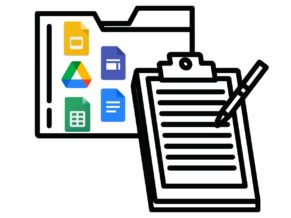What are digital portfolios and why are they important in classrooms? While typically, a digital portfolio can be defined as a collection of artifacts of learning that demonstrates growth over time, it can also serve other purposes depending on the teacher’s objectives and specific learning environment. Beyond evidence of mastery, a digital portfolio can also serve as a vehicle for reflection, an expansion of skills and knowledge, or simply an opportunity for pride, joy, and celebration of learning.
There are many different types of digital portfolios, and the type often is dependent upon the teacher’s objective. A portfolio can be a showcase or presentation portfolio, which would be an opportunity for students to show off their best work. A portfolio can also be a growth portfolio. A growth portfolio demonstrates progress and learning over time. These types of portfolios help to celebrate the struggles that lead to the successes in learning. Additionally, some educators help students create assessment or mastery portfolios, which can serve as an opportunity to check the boxes on standards and other specific criteria-based learning checklists. Lastly, a portfolio can be a hybrid, a combination of one of more of these different types of portfolios. Ultimately, an educator should consider the purpose or objective for the portfolio, and that will help to determine the type.
Google Workspace for Education is an awesome set of tools to support portfolio creation. At a very basic level, a Google Drive folder can serve as a portfolio as students and teachers collect and curate work, storing it in the folder. While opportunities for reflection are limited in this environment, the Google Drive folder could be combined with a main Google Doc that houses the reflection and even creates a point of organization for the portfolio. Google Docs, Slides, and even Google Sheets are all possibilities that support portfolio creation as well.
To learn more about portfolios and how to begin creating them with your students, check out the link to the slides & the full webinar below!

